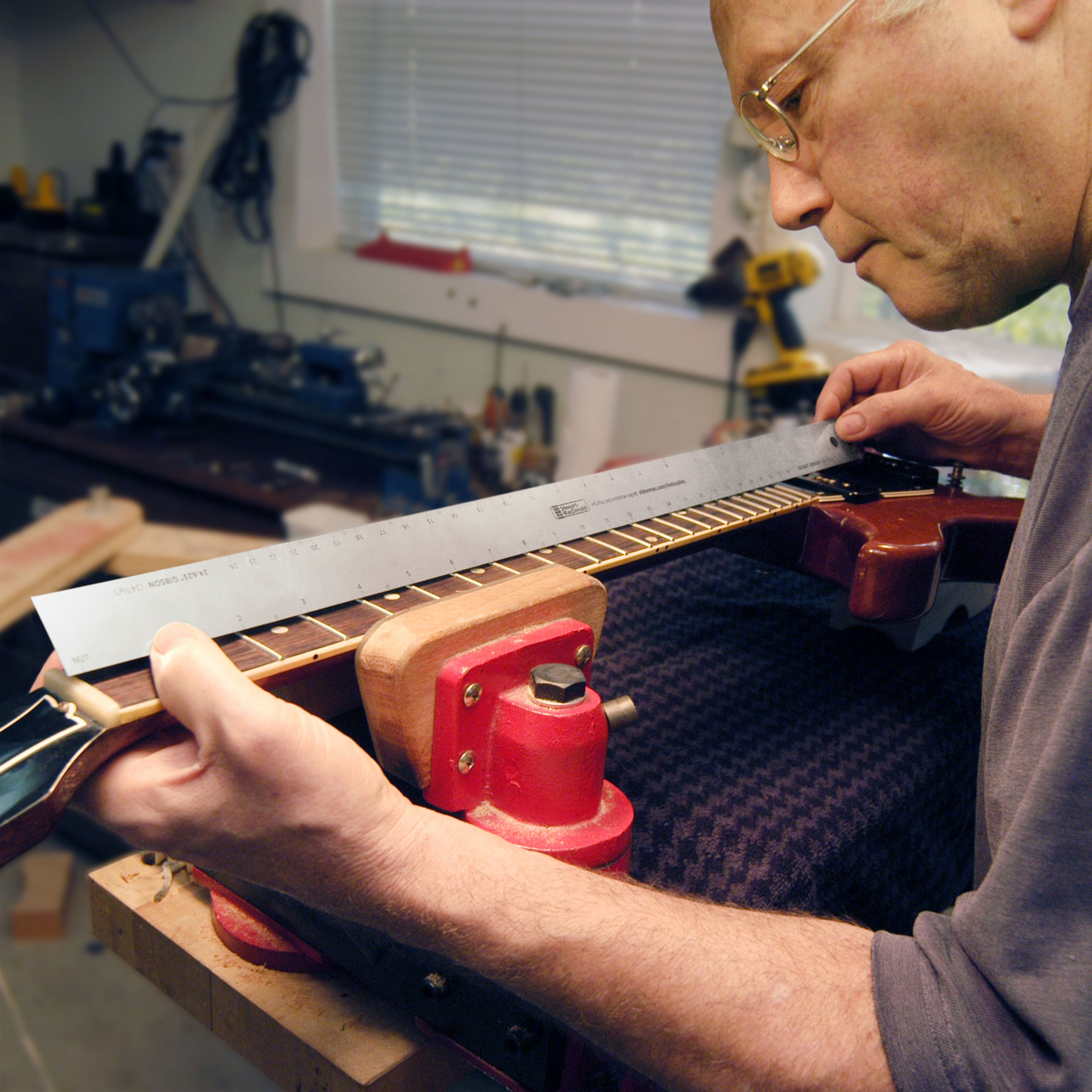Fret Scale Ruler Instructions
Tips for using our fret scale rulers for building and repairing guitars, mandolins, and banjos.
The frets on modern guitars are laid out in an "even-tempered" scale. A continuous piece of fretwire runs across the fretboard at each fret location; thus, the guitar can be played in all keys with minimal compromise from the harmonic scales. The "factor" for fret spacing is 17.817154. Divide the scale length by this fret factor to find the location of the first fret. Divide the remaining scale length by the factor to find the location of the second fret, and so on. Most guitar builders use this method to lay out their fretboards.
In practice, and despite the advent of modern computer controlled machinery, it's difficult to hold these close tolerances without compounding error. For example, the sawblades used to cut the slots are extremely thin. One side of each blade usually dulls faster than the other, and the blade will flex away from the duller side. In a "gang saw" (as used by most guitar manufacturers), one blade may flex left, and the next one to the right. The decision has to be made when to replace or sharpen the blades—a blade obviously can't be replaced after each cut, even though it gets a bit duller with each use. When blades in a gang saw are changed, plus or minus .0005" difference in thickness per blade can add up to nearly 1/32" overall difference in scale length. The width of the spacers between the blades is critical, and can also be a source of error.
We've occasionally noticed slight variations in fret scales among "same model" guitars made in different years. This is probably due to some of the above mentioned factors. The older the guitar, the less accurate were the devices available at the time to measure and set up the saws.
A Gibson 24-3/4" "short scale" fretboard doesn't necessarily have an exact 24-3/4" scale length. The same is true for Martin and Fender fretboards, although they seem to have a bit less variation.
For each model of fretboard, fret scale template or fret scale ruler we produce, we first measure a large number of instruments from the manufacturer, and determine the average scale length they were using over the last 40 or 50 years. We start from scratch, calculating our own scale using the fret "factor" and a scale length which would most closely match this average. In this way, we avoid compounding previous errors, to produce a scale which compromises the variations in actual fretboards. In making a fretboard or a ruler from this derived scale, we try to reduce the number of steps, to minimize error.
When you use our rulers, fretboards or templates, we recommend placing the 12th fret of the new board precisely where the 12th fret of the board being replaced was located. Adjust the thickness of the nut to fill the space between the peghead overlay and the end of the fretboard, and adjust the bridge saddle location to bring the instrument into correct intonation. (Sometimes bridges or saddles were not accurately located at the factory, and need to be moved whether or not the fretboard is being replaced.)
